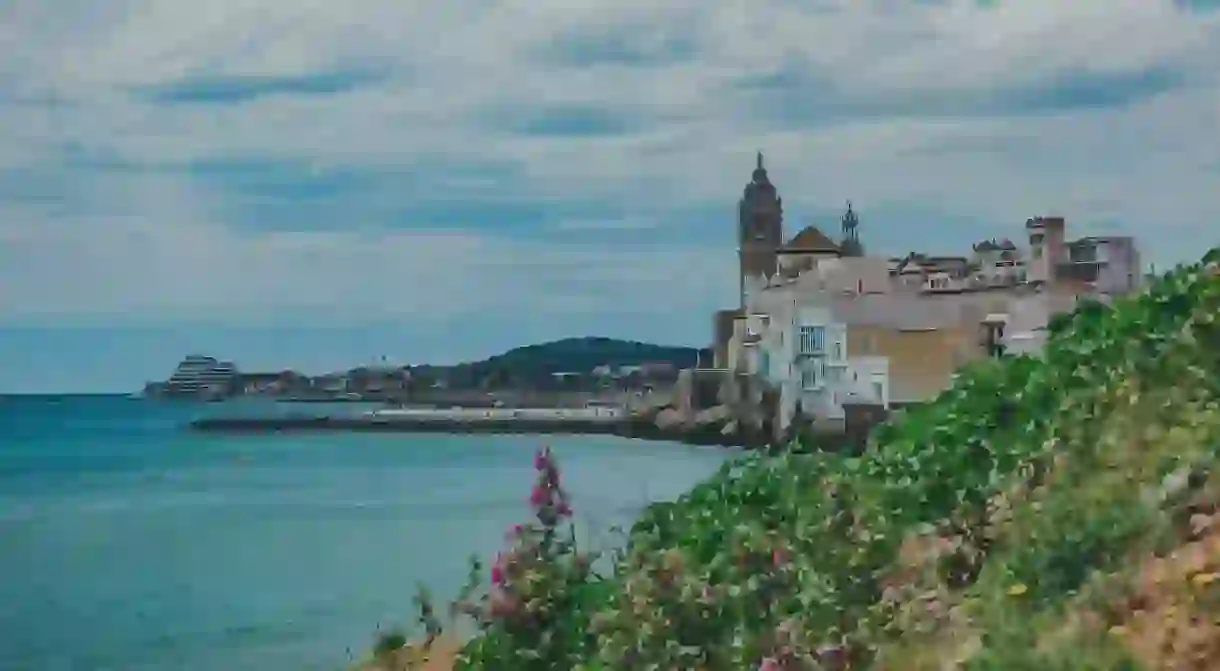8 Amazing Day Trips to Take from Barcelona by Boat

Barcelona is a bucket list destination in its own right, home to world-famous buildings by Antoni Gaudí and the iconic boulevard, Las Ramblas. However, its position on the eastern Mediterranean coast of Spain means it’s also well-placed for day trips by sail or motorboat – from the LGBTQ-friendly Sitges to the traditional fishing village of Sant Pol de Mar.
Mataro
Architectural Landmark

Wedged in between the Mediterranean and the Parque del Montnegre y el Corredor, Mataro welcomes sailors with great fanfare in June – when the Port Festival hosts concerts and sea-related attractions. The big draw in the town is the Nau Gaudi, a former cotton-bleaching shed that now houses the Museum of Contemporary Art, considered the first-ever structure by pioneering Catalan architect, Anton Gaudi. Nature enthusiasts can walk 45 minutes inland – or jump in a taxi – to explore the Forest Park’s Vertical Wood.
Lloret de Mar
Architectural Landmark

This seasoned Costa Brava resort is sought out for its beaches, especially the headlining Lloret Beach – directly in front of the hotels and restaurants – and the quieter, slightly smaller Playa de Fenals to the south. Move away from the heaving sands and you’ll stumble on obscure attractions, such as the Italianate Santa Clotilde Gardens and the Catalan Modernist Cemetery. Divers can spot wide-eyed flounders and moray eels at the Can Roviralta site, found just off Playa de Fenals.
Blanes
Architectural Landmark

Part-resort, part-fishing village, Blanes is known as the “Gateway to the Costa Brava” – hence the sculpture of a gate on the path up to the Palomera viewpoint. Whatever time you drop anchor, stick around for the early evening fish auction, when returning fishermen sell their catch on the quayside. During the afternoon, explore the secluded, rocky coves to the north – Sant Francesc and Treumal are two of the best – or recline on the long, smooth beaches to the south.
Badalona
Architectural Landmark

It’s an effortless glide north along the coastline of Barcelona to reach its smaller, less touristy neighbour. Once on land, make for the Anis del Mono Factory to learn how the iconic drink is made – don’t forget to greet the bronze monkey – also known as Mono – who sits outside. Stretch your legs by strolling down the 250m (820ft) Pont de Petroli before heading to the main beach to rent a jet ski or paddleboard.
Palamos
Architectural Landmark

Sailors up for a longer voyage may wish to venture north to Palamos, where you can immerse yourself in Mediterranean fishing culture without leaving the port. Make your first stop at the Museu de la Pesca, where the exhibits explore fishing methods and preservation techniques throughout the centuries. Then move on to the market or auction to see the day’s catch being sold – before attending a cooking demonstration in the Espai del Peix next to the museum.
Calella de Palafrugell
Architectural Landmark

Sant Pol de Mar
Natural Feature
Sitges
Natural Feature

Scary movies and roaming zombies contribute to the appeal of Sitges, a seaside town situated just under 40km (25mi) north of the Catalan capital. Every October, it hosts the internationally renowned Horror Film Festival – a highlight of which is the Zombie Walk, when participants walk the streets dressed as members of the undead. It’s also one of the most LGBTQ-friendly destinations in Europe – be sure to visit in February when Sitges hosts a drag-themed carnival unlike any other in Spain.













